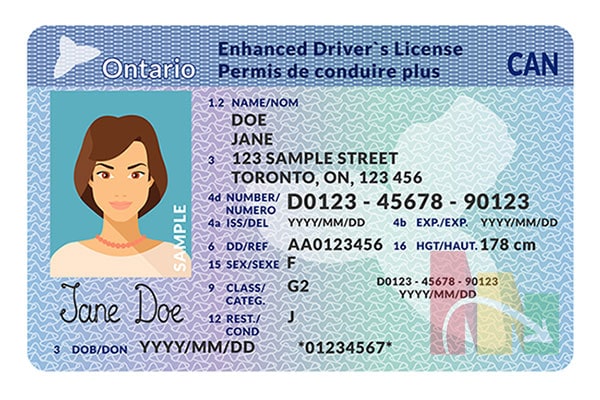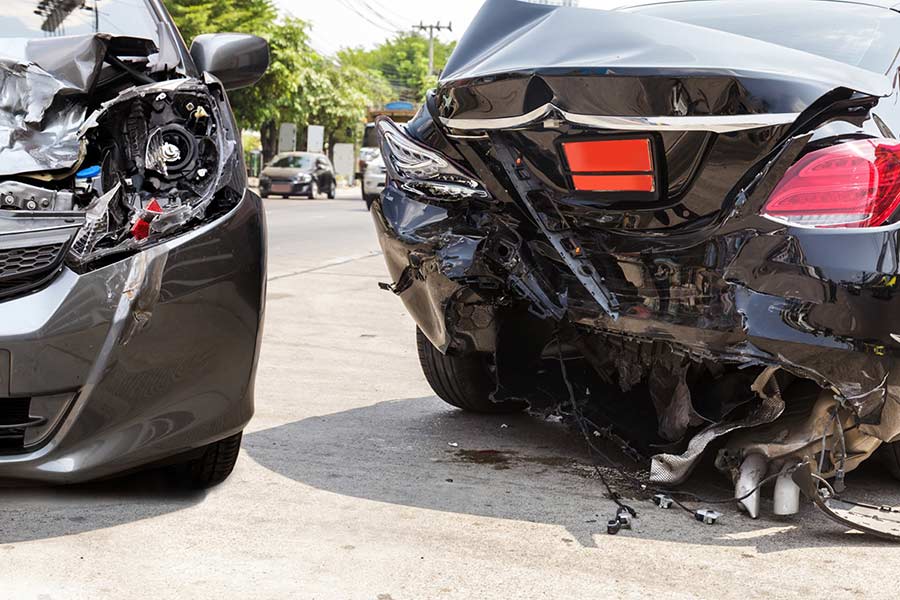There are more than 26 million licensed drivers across Canada at the moment. Whether you use your driver's license every day or just drive once in a while, you need to have a thorough understanding of Canadian road laws.
These help to protect you and other road users while you are out and about. But where do you start? There are plenty of Canadian road laws in place and understanding them all as a driver-to-be can be overwhelming!
If you are thinking of learning to drive, the Canadian new driver's guide is exactly what you need! Read on to find out everything you need to know about driving safely in Canada.
Getting a Driver's License
Having a driver's license is a legal requirement in Canada and you should always have this with you when you are driving. This should be in date and feature a photo that is recognizable as you.
If you have recently arrived in Canada and have a license from your home country, you may be able to use this for a short while. However, it is important to check with the province regulations before you do this. If you plan to use your foreign license, you will need an International Driving Permit (or IDP.)
The age for getting a Canadian driver's license depends on where you live. In some places, like Alberta, it is fourteen. In other provinces, like British Columbia, you need to be sixteen before you can get your license.
To begin with, you will have a G1 license and you use this while you are learning to drive. It costs $160 and includes your knowledge test. It also covers the cost of your G2 road test, provided you pass the G1 knowledge test.
Once you have passed your test, you will receive a G2 license. This costs $90 and is valid for five years. You then have one final road test to complete before receiving your full G license.
Having a license isn't a guarantee that you will always be able to drive. Breaking road restrictions could lead to a temporary or permanent license suspension so it is important to follow the rules of the road (which we'll look at in just a moment.)
Understanding Your Driver's Abstract
A driver's abstract is essentially a record of your driving history and personal details. You can access your driver's abstract online or you can contact Service Ontario directly to get a copy of yours in the post.
Your abstract begins when you get your first G1 license. This includes basic information such as:
- Your name
- Your date of birth
- Your sex/gender
- Your height
- Your current place of residence
- Your driver's license number
- The date that your license was issued
- Which classification of license you have (G1, G2, or G)
It will also contain details of any driving restrictions or medical needs that you need to adhere to. For example, if you need to wear glasses for driving it will have a note of this. Similarly, any road accidents will be noted in your abstract.
If you have any driving convictions or penalties these will also appear on your abstract. This includes demerit points. So what are these and how do you avoid them?
Understanding Demerit Points (So That You Don't Accumulate Them!)
Demerit points are penalties that you receive if you break the rules of the road and you should take them seriously! If you have a driver's license, you can accumulate these points. Accumulating too many demerit points could result in your losing your license.
When you first get your license it won't have any points on it. Traffic violations will earn you between two and seven demerit points at a time. This depends on the severity of your traffic violation.
Once you have between two and eight points on your full license, you will get a warning letter. If you have between nine and fourteen points, you will receive a second letter that will outline ways of improving your driving. This is usually relevant to your traffic violations.
If you receive fifteen points or more, the government will suspend your license for 30 days. If you do not voluntarily surrender your license it could be suspended for up to two years.
If you have a G1 or G2 license, the violation thresholds are lower. Two to eight points will earn you a first and second warning letter. Once you have nine points your license can be suspended for 60 days.
The demerit points on your license can last for up to 11 years depending on the type of your traffic violation. However, they don't just put your driver's license at risk. Demerits can also affect the cost of your car insurance, so you should always try to avoid getting them.
Getting Car Insurance
If you are planning to drive in Canada then car insurance is a must-have. If you are driving a new car then this is a legal requirement.
However, it is also important to avoid financial disaster if you are involved in a car accident. This is why most Canadian drivers spend an average of $1,142.70 on car insurance each year.
A comprehensive insurance policy will cover the cost of damage to your car if you are involved in an accident. It should also take care of liability if someone tries to sue you for a car accident. The cost of this can vary depending on your car's value.
Most Canadian provinces have a mandatory minimum for car insurance coverage. So you should ensure that your coverage meets these requirements. This is generally around $200,000.
However, your province's mandatory minimum may not provide as much coverage as you want or need. For example, it might not provide accident benefits or coverage for the value of your car. Because of this, it is also important to buy insurance based on your specific needs.
The cost of this can vary depending on your age, your driving experience, and the number of demerits on your license. If you have been involved in a crash or already made an insurance claim this can also increase the price of your insurance.
Investing in Roadside Assistance
As well as getting insurance, it is worth taking out a policy with a Canadian roadside assistance service. These services help you if your car breaks down unexpectedly on the road. They will take care of things such as:
- Car towing
- Battery boosting
- Emergency fuel deliveries
- Locksmith coverage
When choosing a roadside assistance provider, you want someone who is going to provide extensive coverage wherever you are. Normally, you pay a year's membership fee for basic roadside assistant coverage.
However, they may have a car age limit. For example, some companies will not provide coverage for cars that are over 12 years old. This is because they are much more likely to break down.
Some companies pair up with roadside assistance services, so it's always worth asking about this. You may be able to get roadside assistance coverage through your bank or billing provider.
Canadian Tire Roadside Assistance
The Canadian Tire Roadside Association or CTRA has 1,700 locations across Canada and covers nearly 900,000 km of roads across the country. So if you are looking for a provider, they can guarantee pretty extension roadside coverage!
They offer annual membership plans. However, if you do find yourself in difficulty without membership you can still call the CTRA. They offer on-demand roadside assistance 24-hours a day, seven days a week!
Understanding the Rules of the Road
In order to avoid traffic violations, you first have to have a thorough understanding of the Canadian rules of the road. These will be covered in your driving lessons and G1 knowledge test. However, here are some of the basics.
Highway Traffic Acts
The Canadian Highway Traffic Acts are in place to keep you and other road users safe. They create certain driving restrictions and outlines penalties for violating these.
These penalties can be financial, include demerit points on your license, or both! For example, you can receive a fine of up to $600 for distracted driving. Even minor infractions can come with a fine of $110.
Major infractions include:
- Driving a vehicle with an insecure load
- Speeding through a construction zone
- Exceeding the speed limit
Stunt Driving
Stunt driving in Canada is a serious offence and comes with serious consequences. This is a style of driving that is purposefully risky or reckless. This includes:
- Driving 50km per hour or more than the speed limit
- Racing other vehicles
- Chasing, cutting up, or cutting off vehicles
- Not letting other vehicles pass you
- Weaving between lanes
- Driving a vehicle from the passenger or back seat
- Burnouts
- Keeping pace alongside another vehicle for an extended period of time
- Performing donuts or wheelies
- Driving other drivers off the road
Impaired Driving
One in twenty Canadian drivers reports driving while impaired, although this figure may be much higher. Impaired driving involves driving when you are under the influence of drugs or alcohol.
This can seriously inhibit your reaction time and your ability to judge the road. Because of this, it puts you and other drivers at risk.
If you are caught driving while impaired, the consequences can be severe. A first conviction for impaired driving comes with a:
- Fine of up to $1,000
- Prison sentence of up to 10 years
- License suspension
Repeat convictions will be treated even more severely.
How to Avoid Car Accidents
On average, there are more than 160,000 accidents on the road in Canada every year. These can vary in severity. However, even being involved in a minor car accident can be extremely scary.
It could also have a big impact on your insurance costs, so it is important to avoid accidents at all costs. Thankfully, there are plenty of things that you can do to help yourself avoid car accidents.
Obviously, you should never drive over the legal alcohol limit. However, even driving after one drink can impair your judgment, especially if you don't drink often. Because of this, it's best to leave the keys at home if you are planning to have a drink.
That said, drink and drugs aren't the only things that can impair your judgment on the road. Being tired or being in a car with lots of distractions can make it hard to focus on the road. So make sure you're always well-rested and get rid of distractions before you set off.
While driving, make sure that you always:
- Check your blindspot before maneuvering
- Avoid the fast lane unless you need to be in it
- Use your signal lights before maneuvering
- Pay attention to the road ahead and behind you
- Put your phone away out of sight so it can't distract you
Paying attention to the road can only do so much to protect you. If there is an issue with your car before you set off, you could end up in hot water.
This is why it's very important that you regularly get your car serviced. You should regularly check your lights, horn, tires, and brake pads as well. If you notice any warning lights on the dash, you should get these checked before you take your car out.
Keep the Canadian New Driver's Guide in Mind on the Road
As you can see, there are plenty of things to think about when you are on the road in Canada. Keeping the Canadian new driver's guide in mind will ensure that you can look after yourself and other road users.
Ready to hit the road? Then it's time to get kitted out with car insurance, so start comparing policies now to find the best deal on your coverage.




